Newsletter February 2022
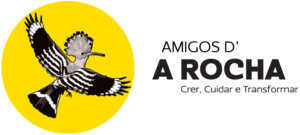
 Welcome to our February Newsletter.
Welcome to our February Newsletter.
We hope you enjoy this month articles.
Helen & Filipa
S
N
A
P
SHOT

John Muir

Scottish-American Naturalist, Conservationist and Writer
Born: 21st April, 1838, Scotland
Died: 24th December, 1914, USA
John Muir was born in Dunbar, Scotland; in 1849 his family immigrated to USA, starting a farm near Wisconsin. He had to help his father at the farm, and in his free time he used to roam around the fields and woods of Wisconsin where he became a nature lover. He also was an inventor of wooden practical mechanisms. In 1960, he enrolled at the University of Wisconsin but he never managed to graduate and left after 3 years. During some time Muir travelled around Canada and USA, exploring nature, collecting and cataloguing plants. In 1866, he started to work at a wagon wheel factory in Indianapolis, USA, and in 1967, he had an accident which injured his eye, and this changed his life. After that moment he decided to dedicate his life to nature.
During his travels he discovered the Sierra Nevada and Yosemite Valley, in California. He travelled around inspired by his interest in glaciers and forests. He was the first, to write the theory which attributes the Yosemite formations to glacial erosion. During his life he wrote many books and articles inspired on his travels and love for nature. In some of his articles he drew attention to the deforestation of forests and mountain meadows by cattle and the importance of the federal government adopting a forest conservation policy. He was largely responsible for the establishment of the Yosemite National Park and Sequoia National Park. He co-founded the Sierra Club, one of the first environmental conservation organizations.
John Muir, had an important role in raising awareness of the importance of protecting our natural heritage, his life and writings are an inspiration for nature conservationists all over the world.
IFO’s – Identified Flying Objects…
Green-striped White
(Euchloe belemia, Esper, 1800)
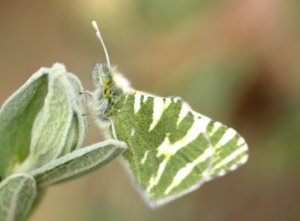
Photo cortesy of Naturdata

Morphology: It is a medium butterfly from the Pieridae Family, with a wingspan between 36 to 48 mm. The wings have a triangular shape; the upper side of the wings are white with an apical dark marking (triangle shape with white spots) and a dark discoidal spot on the forewing. The underside of the wings has white and green stripes. The adults fly from January to July, with two generations per year (bivoltine) and have an extraordinary fast flight.
Habitat: Wide range of habitats, hot, dry and with few vegetation, like flowery places, edges of cultivated fields, rocky slopes, fallow lands and meadows.
Distribution: North Africa and Southern Iberian Peninsula.
Notes: The larvae feeds on plants from the Brassicacea Family: Iberis sp, Sisymbrium sp. Populations on this species are declining mainly to overbuilding, tourism and overgrazing.
Tweet… Tweet…

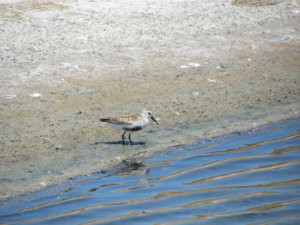
Photo by Guillaume Réthoré
Dunlin
(Calidris alpina, Linnaeus, 1758)

Photo by Filipa Bragança
Identification: It is a small sized wader from the Scolopacidae Family, with a wingspan between 32 and 36 cm and 17 to 21 cm in length. It shows, two different plumages, in winter hard to identify, the upper parts are plain grey- brown and the lower parts white with spotted grey on the chest; in summer distinctive black belly, the upperparts are streaked grey brown. The bill is black neither short or long and slightly curved (the length and curvature are variable, females have longer bills than males). In flight it has a white wing panel and white rump with a central black line.
Habitat and Ecology: Breeds in the Arctic tundra in moisty grounds, swamps, peat-hummock tundra, but as well in coastal grasslands, salt marshes and wet upland moorland; outside the breeding season the species can occur in estuarine mudflats, saltmarshes, and other freshwater and brackish wetlands (dams, lakes, sandy beaches). In winter is highly gregarious. The diet is omnivorous, mostly adult and larval insects, invertebrates and plant matter (seeds).
Distribution: This is a migrant species with a Holarctic distribution (Europe, North Africa and North America), which breeds in the Arctic, Sub-Arctic Region and some temperate regions in North Europe; it winters in temperate and sub-tropical areas of Southwest Europe, Northeast Africa through Northeast India. In Portugal can be seen all year round (some non-breeding individuals remain in winter grounds), but is more common in the winter.
Threats and Notes: Least Concern (LC) in the International Union for Conservation of Nature (IUCN). The overall population trend is decreasing. The main threats are habitat loss due to human action (disturbance and pollution) and invasive species (plants and predation). There are several subspecies according to the geographical location.
DID YOU KNOW? 
- On the 19th of January we had our first Friends Event for a long time! Hopefully it is a restart for a new season!

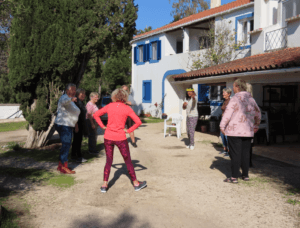
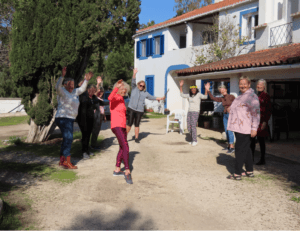
Photos by Guillaume Réthoré
- On the 21st of January, A Rocha took part on the National Osprey Census, 1 individual was seen around the Ria de Alvor; although during the weeks before we saw 3 different individuals, probably birds which use this area for wintering.

- On the 5th of February, A Rocha will organize a walk to Ria de Alvor to celebrate the International Day of the Wetlands. The walk is opened to everyone but it needs booking. The meeting point is the Mexilhoeira Grande train station at 9 am. For booking and information’s email to: paula.banza@arocha.org
- Some of the birds seen in Ria de Alvor, Nature 2000 in the last couple of weeks: Greater Flamingo (Phoenicopterus roseus), Eurasian Spoonbill (Platalea leucorodia), Black-shoulder Kite (Elanus caeruleus), Western Osprey (Pandion haliaetus), Western Swamphen (Porphyrio porphyrio), Ruff (Calidris pugnax), Booted Eagle (Hiraaetus pennatus), SparrowHawk (Accipiter nisus), Northern Raven (Corvus corax), Barn Swallow (Hirundo rustica), Redwing (Turdus iliacus), Brambling (Fringilla montifrigilla) and Eurasian Crag Martin (Ptyonoprogne rupestris).
- At the end of 2021, some volunteers stayed at Cruzinha, everyone has their own story but share the same interests 🙂
Tom Barendse (25 years old, Dutch)
I did my bachelor’s degree on International Land and Water Management in Wageningen University. Currently I am finishing off my Masters in Hydrology and Water resources.
 I grew up in Tanzania and Uganda where my parents work for MAF (Mission Aviation Fellowship). I went to an international school in Uganda and have always been interested in nature and the conservation side of things. I have been in the Netherlands now for almost 6 years to complete my studies. My aim is to work in the field of hydrology and more specifically on water availability in areas where this is needed.
I grew up in Tanzania and Uganda where my parents work for MAF (Mission Aviation Fellowship). I went to an international school in Uganda and have always been interested in nature and the conservation side of things. I have been in the Netherlands now for almost 6 years to complete my studies. My aim is to work in the field of hydrology and more specifically on water availability in areas where this is needed.
I got to know about A Rocha when we visited A Rocha Kenya for a holiday. The idea of combining conservation with faith really interested me. I did my internship at A Rocha Portugal (October to December 2021). My focus is on microplastic transport in the estuary and rivers. Using GPS trackers I aimed to find out information on travel distances/paths of microplastic and the locations that they end up.
I really enjoy being around the friendly people in the centre. The nature in the surrounding area is also very beautiful. Spending most of my time on a kayak in the estuary also makes me appreciate the biodiversity. If I would have to choose I would say I enjoy being near the ocean the most. I really liked seeing the horseshoe whip snake that Jasper caught at the centre.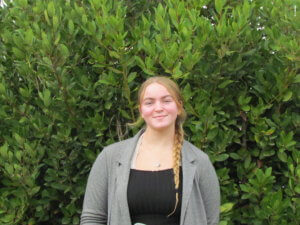
Heather Sluka, 18 years old, British/American
I was born in India and moved to the UK when I was 3, and lived there for 11 years, and then 4 years ago moved to Florida. Now I’m at A Rocha Portugal for part of my gap year but next year I’ll be at the University of Miami to study English and maybe Psychology. My dad – Bob Sluka – leads the marine Conservation Program for A Rocha International. I’ve been involved with A Rocha since I was younger, traveling with my dad. I was in Portugal as a volunteer and I helped around the centre with different people that were here for internships and projects. I loved all the people there, they’re so welcoming and funny, but I also loved the wildlife and the beaches. I love foxes and I have seen one around the centre which was really cool. I think they are very cute!
 A Rocha’s project – Plastic Free February
A Rocha’s project – Plastic Free February
Get ready for Plastic Free February Challenge! Reduce your plastic, especially single used plastic and send us a video or an article with your difficulties and solutions (email to: isabel.soares@arocha.org)
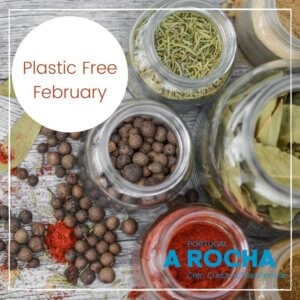
Tips for starting:
- Look careful at labels, some of the personal products like body creams and gels are full of microplastic. Try to avoid them!
- Use your own cloth bags when buying your vegetables and bread. Nowadays you can buy vegetables without using a plastic bag, weighing them at the checkout and using your cloth bag to take them home.
- Avoid double packaging! Biscuits, cookies and some other products come in small bags. Avoid those!
- Try to buy a detergent that can clean windows, counters and ovens, instead of buy 3 different ones. Also for bathroom products.
- Every time you can, buy products in a glass bottle instead of in a plastic bottle
- Research on-line for other tips.
Reduce your consumption, Reuse what you already have, Refuse to accept what you don’t want, Recycle what you can’t use anymore
 Friends Event
Friends Event
‘Butterfly Walk’ with Paula Banza, Isabel Soares and Filipa Bragança
It will take place at A Rocha on Wednesday 23rd February 2022
Starting at 10.30 am and will finish around 14.00 pm
This is an introduction to the project that A Rocha is taking part in “Census of Butterflies of Portugal”
A local walk will take place where we hope we can see different species of butterflies.
Lunch is included in the ticket price
Ticket Price €20.00 Friends €25.00 NON Friends
Booking is essential so please use the link below, book early so you are not disappointed
Let’s hope the weather will be fine and we will see lots of butterflies
 INVASIVE SPECIES
INVASIVE SPECIES
American Pokeweed (Phytolacca americana, L.)

Photo by Filipa Bragança
Clade: Angiosperms
Order: Caryophyllales
Family: Phytolaccaceae
Origin: North America
Size: up to 3 metres in height
The American Pokeweed is an herbaceous perennial plant; the branches are squared, fleshy and woody at the base, can be green, reddish or purple and can grow up to 3 metres in height. The leaves are large, green, entire and lanceolate. The flowers are small, white and develop in elongated clusters (racemes), it flowers from May to September. The fruits are small dark purple berries. All parts of this plant are poisonous for humans, dogs and livestock.
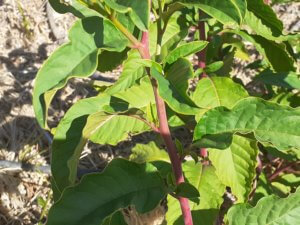
Photo by Filipa Bragança
This species grows in damp fields, along fences, and wooded areas of North America (South-eastern Canada and Eastern USA), where it is native. The Native Americans use this plant as emetic and purgative, also used the root to treat rheumatism, although the ingestion of all parts of the plant can cause gastrointestinal irritation, among others and can lead to fatality. The berries are food source for some bird species on its native range.
This plant was introduced in temperate climate as an ornamental, for medical purposes and as ink (its berries were used to make ink). Nowadays it is naturalized in Japan, Australia and Europe (including Portugal), and it is considered invasive species in 42 countries. The American Pokeweed has an ecological impact in ecosystems, preventing the growth of native species and causing damage to crops; produces a lot of seeds which are dispersed by birds, also can produce shoots from the root.
POPPED UP

Family: Brassicaceae
Identification: It is an annual plant, growing from 2 to 20 cm high; the stem is branched and ligneous at the base; the leaves are oval to lanceolate, with an entire margin and can be more or less fleshy, according to the habitat. The flowers are small, whitish with 4 petals, very sweet scented growing in clusters at the top of the stems. Flowers from November to March.
Habitat and distribution: Dunes and coastal cliffs, scrublands, open areas in pine trees woodlands, on sandy soils, slopes and rocky cracks, usually close to the coast (although can also be found inland areas). It is native from the Mediterranean Region and Macaronesia (Canary Islands and Azores).
Notes: The flowers are very rich in pollen and attract insects. This plant is used as an ornamental in gardens and parks with many varieties (pink and purple flowers) and is naturalized in many parts of the world.
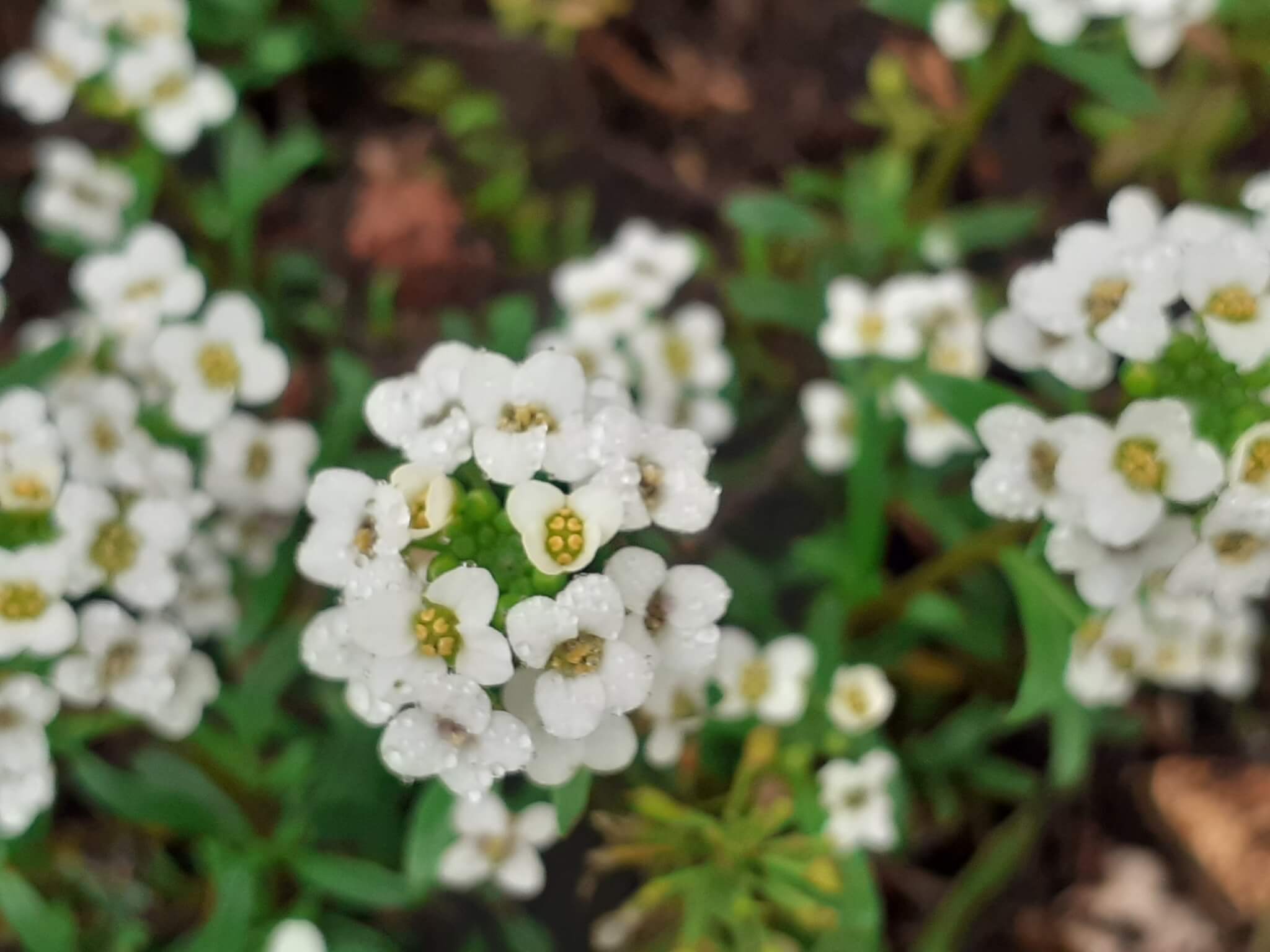
Photo by Filipa Bragança
Sweet Alison
(Lobularia maritima subsp maritima L. Desv.)
DATES TO REMEMBER

2nd February – International Day of the Wetlands
3ed, 10th, 17th and 24th February – Cruzinha Birdringing display & Moth Talk (10am to 12 am) Book here
5th February- Walk in Ria de Alvor, meeting point: Train station Mexilhoeira Grande at 9am
14th February- Valentine’s Day
19th February – Beach cleaning Praia de Alvor at 10:00 am. More information email to: Isabel.soares@arocha.org
22nd February – Beach cleaning at Ria de Alvor at 11:50 am. More information email to: Isabel.soares@arocha.org
23rd February – Friends Event “Butterfly Walk”. Booking only
Thank you for supporting the Friends of A Rocha Portugal
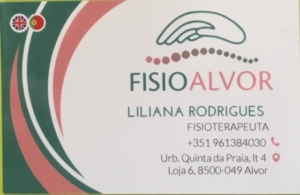
Physiotherapy, Massages (relaxation, sports, therapeutic)
Other therapies
Beauty (manicure, pedicure, hair removal, facials)
Open Monday to Friday

Dr Roy Rodrigues
Av. Do Brasil, Qta das Palmeiras, Lt P2, R/c A, 8500-299 Portimão
(+351) 282180683
royaldente@gmail.com
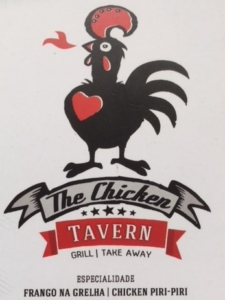
Urbanização Mar e Serra n° 47, Alvor
8500 – 783 Portimão
(+351) 911597735
Thought of the month 
“The Earth is what we all have in common.”
Wendell Berry – American Writer, 5th August 1934 (age 87)

LETS BE GREEN – LETS BE GREEN – LETS BE GREEN 
Care products are made of hazardous chemicals. The beauty industry is largely unregulated and there are no legal standards for personal care products labelled as “pure” “natural” or “organic”.
-
- Choose products with fewer and simple ingredients and with fewer synthetic chemicals
- Use fewer personal care products
- Choose products without synthetic fragrance

- Read labels carefully
- Some ingredients of personal care products can cause long term health issues
- Avoid the chemicals of concern for shampoo: ethanolamines (DEA and other), parabens, UV filters (oxybenzona), Sodium Laureth Sulfate and other –eth compounds, Formaldehyde realising preservatives
- 1,4-Dioxane (contaminant created when some ingredients react like Sodium Laureth Sulfate, PEG compounds, and other compounds –xynol, ceteareth and oleth) doesn’t appear in the ingredients label; it is present in products that create suds (shampoo, liquid soap), it is considered a human carcinogen
LETS BE GREEN – LETS BE GREEN – LETS BE GREEN
Climate change – Sea level rise
Climate change affects all regions around the world, is irreversible and will get worse in the following decades. Effects that scientists predict in the past are now happening, like the ice melting, sea level rise, extreme weather events (heat waves, drought, and rainfall) and all this is happening due to global warming. From 1901 to 2020, global temperatures rose by 1.1°C, this may not seem much, although small changes in temperature correspond to enormous changes in the environment; in the end of the last ice age (when most of the planet was covered in ice), the average temperature was just 5 to 9 degrees cooler than today. 2020 was the second hottest year and during 1880-2020, the seventh hottest years occurred after 2014 (July 2021 was the hottest month ever recorded).
The Sea level rise (global warming causes polar ice sheets and glaciers to melt, this will cause sea levels to rise, resulting in flooding and erosion of coastal areas) has accelerated to 3,2 mm/per year since 1993 (during the XX century was around 1,7mm/year) and the area covered by sea ice in the Artic by the end of summer has shrunk by about 40% since 1979. The sea level rise will affect hundreds of millions of people in the next decades and it’s already affecting several Asian countries (China, Bangladesh, India, Vietnam, Indonesia and Thailand). Sea level rise can cause severe economic losses, humanitarian crises and political consequences.
Sustainability Champions 
Sustainability Champions from around the World– Looking at ways to curb pollution and waste management.
We would like to thank Daniel Hartz, the founder of Sustainability Champions for giving us the permission to share this information.
Bjarke Ingels is an Architect from Copenhagen and he turned a mountain of trash into a power plant that doubles as a skiing facility, converting 440K tons of waste to energy!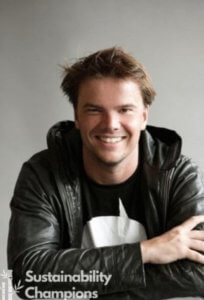
What can a decade of planning and rigorous innovation do? The answer was a waste-to-energy power plant that doubles as a public recreational ski slope as its highlight.
In 2019, CopenHill opened to the public in Copenhagen. It revealed a signature park with a ski slope design. CopenHill features a 170,000 square meter facility that houses a power plant that annually converts 440,000tons of waste.
It was dubbed the most energy-efficient waste-to-energy plant globally, delivering clean energy and district heating for 150,000 homes in Denmark. The rooftop activity park provides visitors with hiking trails, playgrounds, fitness structures, trail running, climbing walls and views across the city during the summer months. In the winter, people can enjoy skiing down its 500 meter ski slope.

Lights off for seabirds
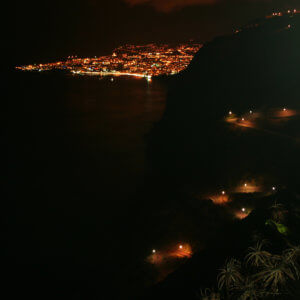
Photo by Cátia Gouveia
This Autumn, night returned to Azores and Madeira archipelagos, to protect seabirds. Several municipalities turned off public lighting at this critical time, when juvenile seabirds leave the nest. These inexperienced birds are often attracted to artificial lights, get dazed and end up flying into buildings, powerlines and cars. Some fall to the ground, and may even die from their injuries or the inability to fly.
Alongside the blackouts, SPEA Madeira and SPEA Azores organised teams of volunteers to search for dazed birds and return them safely to the ocean, in the Salve uma Ave Marinha and SOS Cagarro campaigns. SPEA’s work to assess and minimize the impact of light pollution on seabirds continues in the EELabs project.

Check the website for dates for organised tours
Guillaume Réthoré (Gui)- My life with birds: Great Spotted Cuckoo (Clamator glandiarius)
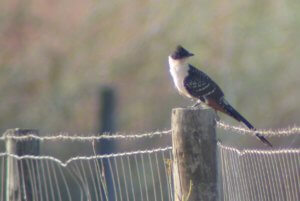 Let’s go back to 2008, when I was still just volunteering at A Rocha. At that time, i did not have a camera like today so i did mostly digiscoping (adapting a small camera on a telescope), hence the poor quality of this picture. I was doing the last wader count before going home to France a few days later. It was July, it was hot and there were few birds around. That is when I saw this bird flying by. It had a long tail but did not match for a Magpie (Iberian or Common). Fortunately, it landed on a post and I managed to see and digiscope it : a juvenile Great Spotted Cuckoo ! It was the first time I saw this species, so a special moment. I have seen more since but it is always a special moment finding one at Ria de Alvor since it is not seen every year. The Great Spotted Cuckoo arrives early (as early as January) and breeds early, which is why there are already juveniles dispersing in July.
Let’s go back to 2008, when I was still just volunteering at A Rocha. At that time, i did not have a camera like today so i did mostly digiscoping (adapting a small camera on a telescope), hence the poor quality of this picture. I was doing the last wader count before going home to France a few days later. It was July, it was hot and there were few birds around. That is when I saw this bird flying by. It had a long tail but did not match for a Magpie (Iberian or Common). Fortunately, it landed on a post and I managed to see and digiscope it : a juvenile Great Spotted Cuckoo ! It was the first time I saw this species, so a special moment. I have seen more since but it is always a special moment finding one at Ria de Alvor since it is not seen every year. The Great Spotted Cuckoo arrives early (as early as January) and breeds early, which is why there are already juveniles dispersing in July.
Text and photos by Guillaume Réthoré
Editor: Filipa Bragança
English proof reading: Helen Rodda
Portuguese proof reading: Lena Soares
Production controller: Helen Rodda
Email: friends.arpt@arocha.org
Thank you for supporting us!
Hope to see you soon!




